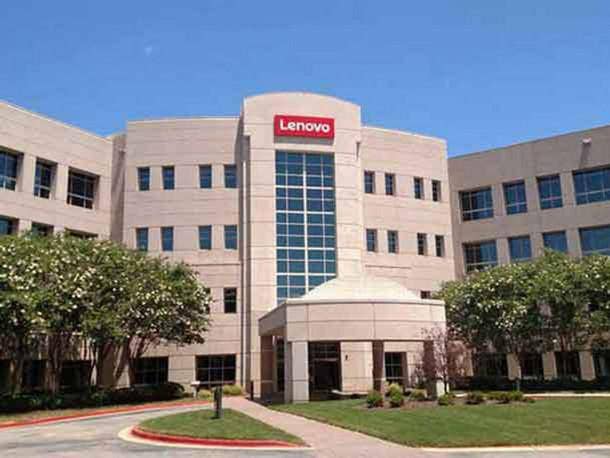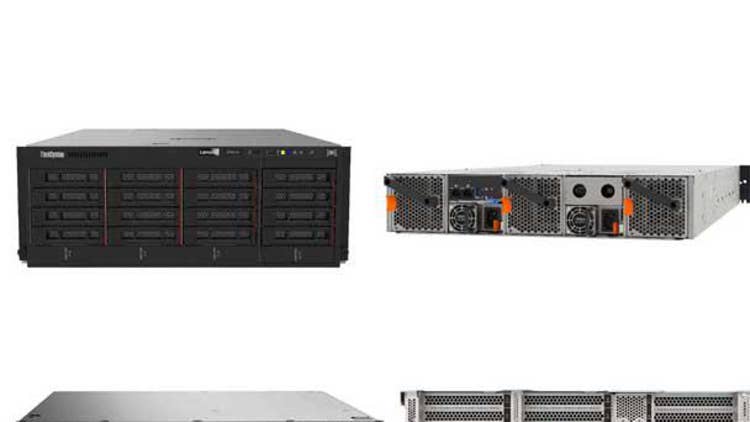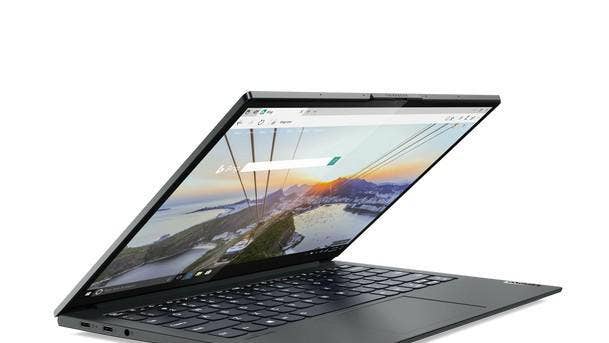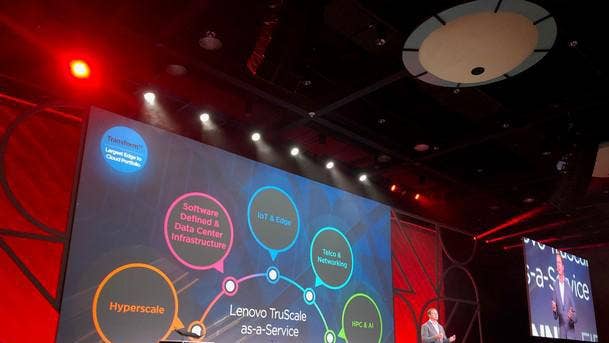‘One Lenovo’: 5 Things To Know On The PC, Data Center Integration Strategy
Lenovo is already making major progress on creating synergies between its two businesses, and is beginning to engage with partners now around the strategy, said Lenovo North America President Vladimir Rozanovich.

Moving To “One Lenovo”
Just two months into his role as president of North America for Lenovo, Vladimir Rozanovich says the company is already making major progress on the “One Lenovo” strategy that he was brought aboard to drive. The strategy focuses on integrating Lenovo’s PC and data center businesses more closely, to create synergies in the way the company develops solutions and goes to market with partners. Rozanovich, formerly a 24-year veteran of chipmaker AMD, brings experience in both PC and data center—a background he’s tapping into as he seeks to integrate the two sides at Lenovo. In an interview with CRN last week, Rozanovich said he’s “come up to speed quickly” in his first two months with Lenovo, where he is responsible for all Lenovo product sales and business groups in North America. And from what he’s seen so far, “I’m even more excited than before about the opportunity we have,” he said.
Rozanovich also serves as senior vice president for Lenovo’s International Sales Organization, which covers all sales outside of China and launched as part of the company’s reorganization on April 1.
In the interview with CRN, Rozanovich discussed how he’s working to transform Lenovo’s North America businesses internally while also starting work with the channel around the “One Lenovo” initiative. Ultimately, the strategy aims to simplify life for partners, create new growth opportunities in the channel and accelerate Lenovo’s market share gains in North America, Rozanovich said.
In terms of when the “One Lenovo” approach will be pervasive within the company, “my personal goal is by the time we hit our kickoff for the new fiscal year, in April, we’re there,” he said. “But by the end of this year, we should be pretty far down the path.”
What follows are five key things to know about the “One Lenovo” initiative.

Transforming Lenovo
Rozanovich (pictured) said that the “One Lenovo” shift will be transformational both in terms of how Lenovo works internally and how the company works with partners. The strategy covers everything from greater collaboration in how Lenovo goes to market—with joint selling across intelligent devices and data center becoming commonplace—to the creation of joint solutions that include both sides of the business, such as remote work solutions that leverage Lenovo’s TruScale infrastructure service offering as well as Lenovo client devices.
In speaking to CRN, Rozanovich said it’s his mission to help Lenovo “transform as a company in the North America space to be even more important to our partners and our customers.” While the two sides at Lenovo have already begun to increase their collaboration in recent years, “there was never that commitment to integrate the teams like we are doing today,” he said.
“The first thing we’ve implemented is our global account team coverage. With large financial services accounts on Wall Street [for instance], when you meet with these IT organizations they’re talking about the entire infrastructure. They’re talking about things like where does monitor technology go, how does thin client technology intermix with VDI technology, how are you going to interface with the cloud providers on an Azure Stack Hub-type solution, what are you doing with Google Anthos?” Rozanovich said. “The conversation literally goes from all devices, to collaboration in the office—which then turns into VDI, which then turns into data center. To have those conversations with our global account teams, that’s where we’ve first started. That’s for those largest of the large accounts where people are looking at their IT investments as something that’s critical to their business. That’s where we’re going to make sure our sellers and our partners really understand the whole solution stack—and how we start putting services on top of that.”

Working With The Channel
The two sides are already working more closely together with Rob Cato (right) and Steve Biondi (left), channel chiefs of the Intelligent Devices Group and Infrastructure Solutions Group, respectively, starting to do joint customer meetings, Rozanovich said. Internal training has begun to make sure that IDG salespeople understand the ISG portfolio, and vice versa, he said.
“We implemented some cross-selling engagements across all of our sales teams—not just the channel partnerships, but all of our sales teams. As we go into our next fiscal year, I’m going to start talking about them interchangeably,” Rozanovich said. “I’ll be making sure that the teams are up to speed on the technology on both sides and the innovation on both sides. The channel partner alignment is happening as we speak.”
Ultimately, “there’s going to be new revenue streams of opportunities for those channel partners between SSG and ISG coming into that IDG space—and vice versa,” he said.
For the channel segment, Lenovo is planning to put a channel leader in place who will “manage that entire umbrella of business. We’re in the process of doing that now,” Rozanovich said. “The goal is that we will have a channel leader for One Lenovo for North America. I want somebody on my staff that’s going to handle everything channel across our business. Over the next year we will have both ISG and IDG coverage of accounts. But I want one channel leader.”
Both Cato and Biondi are “great candidates” for that position—but regardless of who ends up filling the role, Lenovo plans to make the hire internally, he said.

Simplifying Life For Partners
With “One Lenovo” and the forthcoming Lenovo 360 channel program, the ultimate goal is for partners to only have to deal with one organization across PC, data center and services/solutions—provide a dramatic simplification for partners, Rozanovich said.
“Eventually we want to get to the point where [it’s one system] for things like reporting and incentives and rebates and all of that. That’s some of the complexity we want to remove,” he said. “Right now, a lot of our partners who are dealing with both sides of our business may have contracts both legally and rebate-wise and incentive-wise on one side of the house, and they have very similar contracts and rebates and programs and incentives on the other side of the house. We’re saying, wouldn’t it be a lot easier if we looked at consolidated spends, consolidated rebate programs.”
Instead of having medal levels such as Platinum or Gold for each side, the “ideal end state goal” is to have just one level for the whole Lenovo business, Rozanovich said, though he doesn’t currently have a timeline for when that might happen. While “it’s not going to happen overnight,” Lenovo does eventually want to be able to encourage partners to hit their revenue targets by moving into solution areas they haven’t focused on before, he said. For instance, “when you’re looking at servers that go $10,000 each, versus client devices that might be $1,000, when you start looking at these bigger rollouts, you could hit higher thresholds of revenue quicker with some of these [data center] customers,” Rozanovich said.
Lenovo does plan to make sure that there remain targets in place for both sides of the business for any partners that prefer to just focus on one side or the other, he noted.

Gaining Share From Competitors
Lenovo, which is No. 3 in the North America PC market in terms of shipments, continues to pursue the goal of surpassing Dell to become the No. 2 player in the market, Rozanovich said. And the effort should only get a boost from the “One Lenovo” approach, which will see the company looking to engage more with its data center partners around selling Lenovo PCs as well, he said.
Lenovo’s PC shipments in the U.S. climbed 17.7 percent in 2020 over the year before, according to data from research firm Gartner. That growth brought the company to a U.S. PC market share of 16.6 percent for 2020, up from 15.5 percent the prior year. Lenovo remained the No. 3 player in the U.S. by market share, but No. 2 Dell shed nearly a point of market share in 2020 as shipments grew at a slower rate of 6.6 percent, according to Gartner data.
“My sights are set on, how do I grow from No. 3 in the PC space to No. 2?” Rozanovich said. “And then my sights are also set on growing our services, and server and storage revenue—to the point where we are going to be a force in the industry.”
In terms of getting to No. 2 in PC market share in North America, “it’s definitely in our near-term plans that we want to go after that spot,” he said. “I don‘t want to put a date that says, ‘Here’s when we’re going to get it.’ But I view it as, if we don’t get to that point in the next couple years, I have not done the job that I need to do for the company.”

Channel-First
Rozanovich said that among his biggest focus areas for the “One Lenovo” initiative is ensuring that the company continues its strong commitment to going to market with channel partners.
“I’m hearing so much noise in the market about how our competitors are not treating their channel partners well—reducing incentive rates, pulling customers back in [to direct]. You will always see Lenovo be a channel-first company,” Rozanovich said. “We want our channel partners to be extensions of our sales force. That’s the way we get from No. 3, to No. 2, to No. 1 in the [North America] PC market—and that’s how we grow in the server market.”
Ultimately, “I want my teams to have trusted relationships with our partners,” he said. “We will work with them to make sure they’re successful — that’s our goal. So first and foremost, we’re continuing to be a channel-first company.”